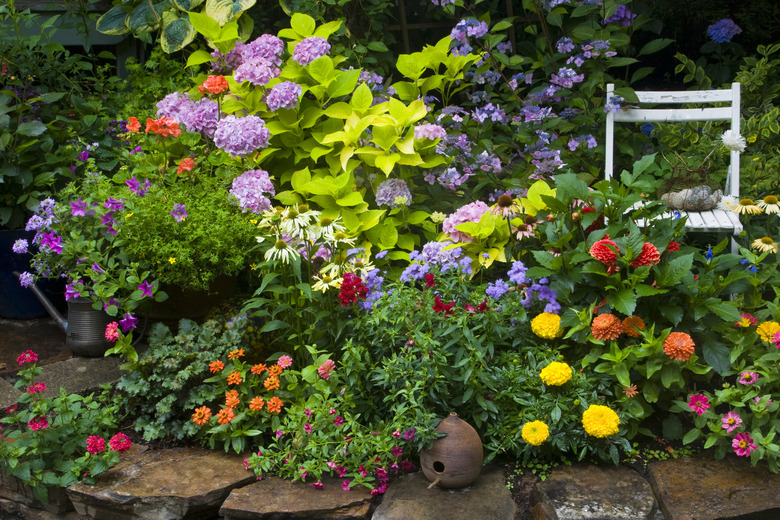What Is The Difference Between Perfect And Imperfect Flowers?
Everyone loves flowers. Bright, often fragrant, delicate, and intricate, blossoms seem like nature's way of making the world a better place. However, the true purpose of a flower is ... sex. Blossoms are in fact the reproductive organs of angiosperms (plants that reproduce by seeds), and it is thanks to flowers that vascular plants can reproduce sexually.
Indeed, the true job of flowers, from dandelions in a garden to long-stemmed roses in a vase, is plant reproduction. The presence or absence of sexual organs will determine whether the flower should be termed "perfect" or "imperfect."
Tip
When a flower is "perfect," it has both male and female parts. If it is missing one or the other, it is termed "imperfect."
Identifying Perfect Flowers
Identifying Perfect Flowers
When you talk about perfect and imperfect flowers, there's always someone in the room who will insist that every flower is a perfect flower. That is true in the sense of aesthetic appeal. Every flower has its fans, and most are undeniably attractive.
To identify flowers as perfect or imperfect botanically is a different matter. A perfect flower, botanically speaking, is one that contains both male and female sexual parts. An imperfect flower is one that lacks either male or female parts. Those plants with flowers that have both male and female parts can self-pollinate. Most flowers, however, are imperfect.
Most angiosperms have flowers that are imperfect, with either male or female sex organs. These plants breed by cross-pollinating with another plant of the same species. Cross-pollination can be the result of windblown pollen or, more frequently, pollinators, like bees and hummingbirds.
Understanding Plant Sex
Understanding Plant Sex
The saying tells us that birds do it and bees do it, but it doesn't say anything about plants. However, plants reproduce sexually as well, which means that they have male sex organs and female sex organs. It's just that people don't talk about plant sex very much unless they are gardeners. Perfect flowers have both male and female reproductive organs. Imperfect flowers have either male or female sex organs. So, what exactly are these organs?
The male reproductive organs of a plant are called the flower's stamen. The pistil produces pollen that produces the plant's sperm. The female reproductive organ is the carpel. It is made up of the stigma, the style, and the ovary. When pollen travels from the stamen to the stigma, plant pollination occurs. The pollen grows a tube through the style to reach the egg and deposits sperm once there. When the sperm from the pollen combines with the eggs in the ovary, fertilization takes place.
Common Perfect/Imperfect Flowers
Common Perfect/Imperfect Flowers
The hibiscus is a classic example of a perfect flower. It has both male and female reproductive organs and doesn't need to cross-pollinate. Other perfect flowers include those of lilies, apple trees, cherry trees, legumes, tomatoes, morning glories, snapdragons, petunias, and irises.
There are many more imperfect flowers than perfect flowers. For example, most vegetable flowers are imperfect, such as the flowers of squash, cucumbers, and corn. Grass flowers are imperfect as are squash, begonia, maize, hazelnut, willow, and oak.
